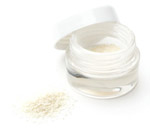Xenografts
- Aug 25th. 2014
- By Dental Implants Cost
Xenografts and other augmentation materials based on granules do not provide initial stability of the implanted graft. In order to stabilize these types of grafts in the defect and to prevent particle migration, the dentist often use a membrane.
Xenografts and other types of granular materials that are either non-resorbable or are slowly resorbed are used in cases where a longer period of time or space maintaining is required, such as lateral augmentation, vertical sinus lift or any defect that is larger than 10 mm with less than three wall bony support. The outcome is bone repair rather than bone regeneration. However, in order to obtain optimal and complete bone regeneration, it is necessary to use a space maintainer with a resorption manner that matches the bone formation rate.

